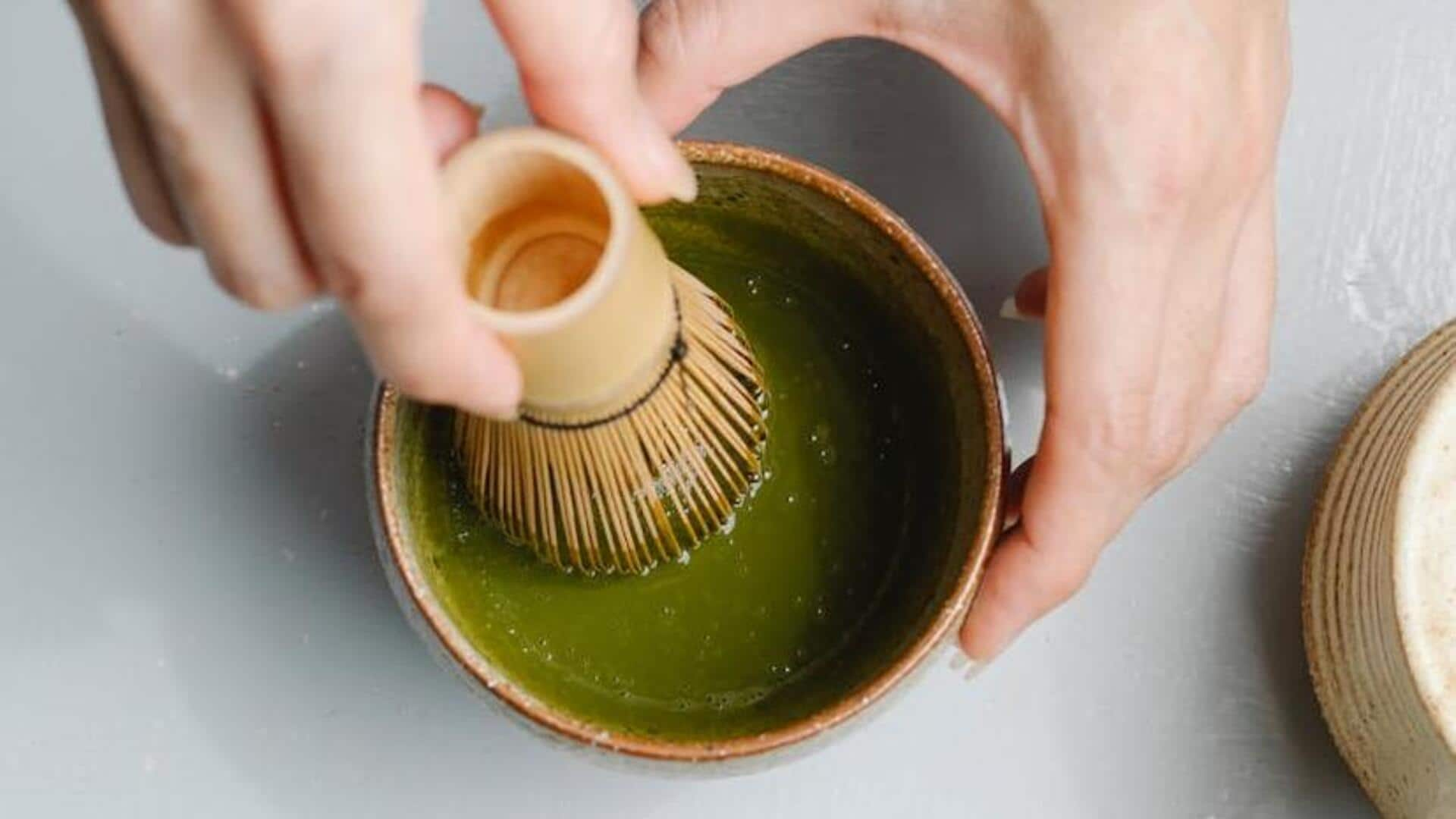
Unfolding the serene history of matcha tea
What's the story
Matcha tea, a high-grade, finely ground powder produced from specially cultivated and processed green tea leaves, boasts a rich history spanning centuries in Japan. Its meticulous cultivation process and ceremonial preparation have elevated it beyond a mere beverage, intertwining it with the very fabric of Japanese culture and traditions. This article delves into the tranquil world of matcha tea, tracing its roots and its rise to global popularity.
Origins
The origins in Zen Buddhism
The history of matcha is rooted in the ninth century when it was introduced to Japan by Buddhist monks returning from China. These monks utilized matcha to maintain focus and alertness during long periods of meditation, valuing its unique ability to calm the mind while simultaneously stimulating mental clarity. The tradition of matcha consumption initially expanded within the confines of Buddhist monasteries before eventually gaining popularity among the samurai class.
Cultivation
Cultivation and processing techniques
Matcha is produced from Camellia sinensis plants that are grown in the shade for approximately three weeks prior to harvest. This method boosts chlorophyll production, resulting in darker green leaves and increased nutrient content. Following harvest, the leaves undergo steaming, drying, and eventually stone-grinding into a fine powder. This labor-intensive process is key to matcha's unique flavor profile.
Ceremony
The tea ceremony: A cultural pillar
The Japanese tea ceremony, or chanoyu or sado, focuses on the preparation, serving, and drinking of matcha. It emphasizes harmony, respect, purity, and tranquility, reflecting the influence of Zen Buddhism. The ceremony goes beyond the act of drinking tea; it's about experiencing the beauty of the moment, the artistry of preparation, and the tranquility of a shared experience.
Globalization
Matcha goes global
Over the past few years, matcha has exploded in popularity around the world, thanks to its health benefits and versatility as a tasty ingredient in everything from lattes to smoothies - and not just in traditional tea ceremonies. Its high antioxidant content has won over health-conscious folks everywhere, while cafes have gotten creative with matcha lattes, smoothies, desserts, and all sorts of yummy treats.
Enjoyment
Tips for enjoying matcha
To experience the true essence of matcha, begin with a high-quality ceremonial-grade powder. Brew it with water heated to 70 degrees Celsius to 80 degrees Celsius, whisk it with energy until a layer of froth forms. Drink it right away to relish its unique umami-rich flavor. For cooking or daily drinking, you can always experiment with lower grades.